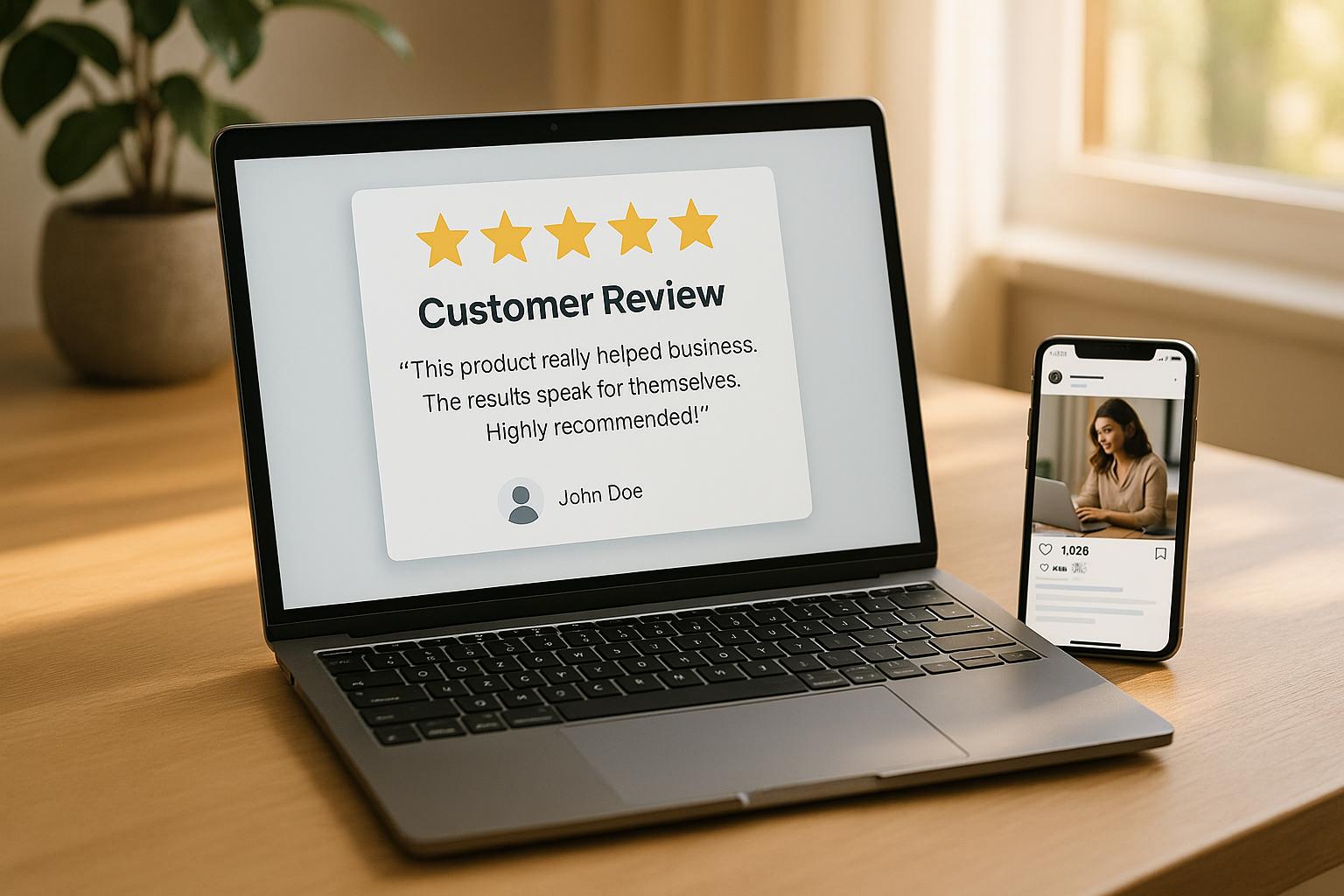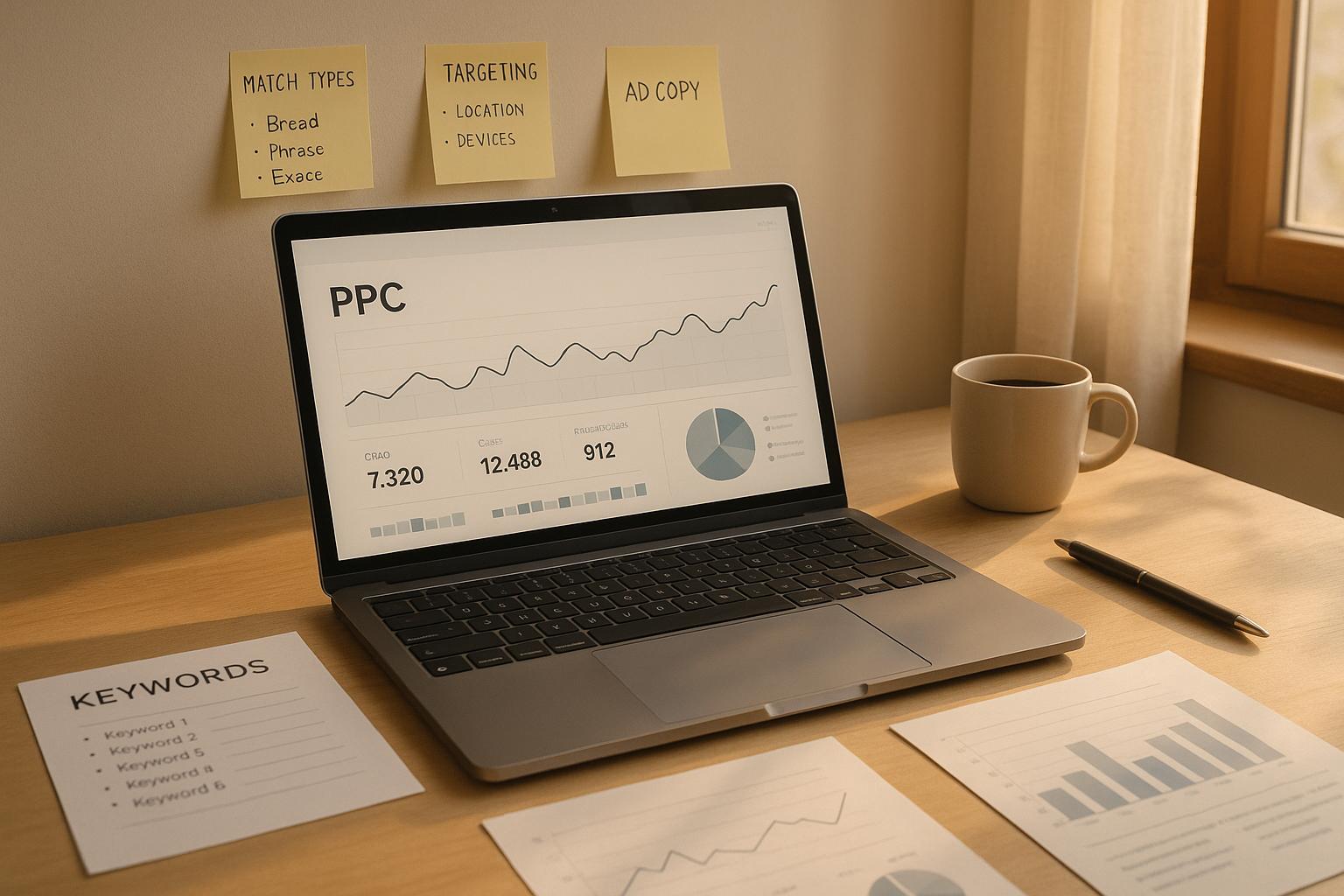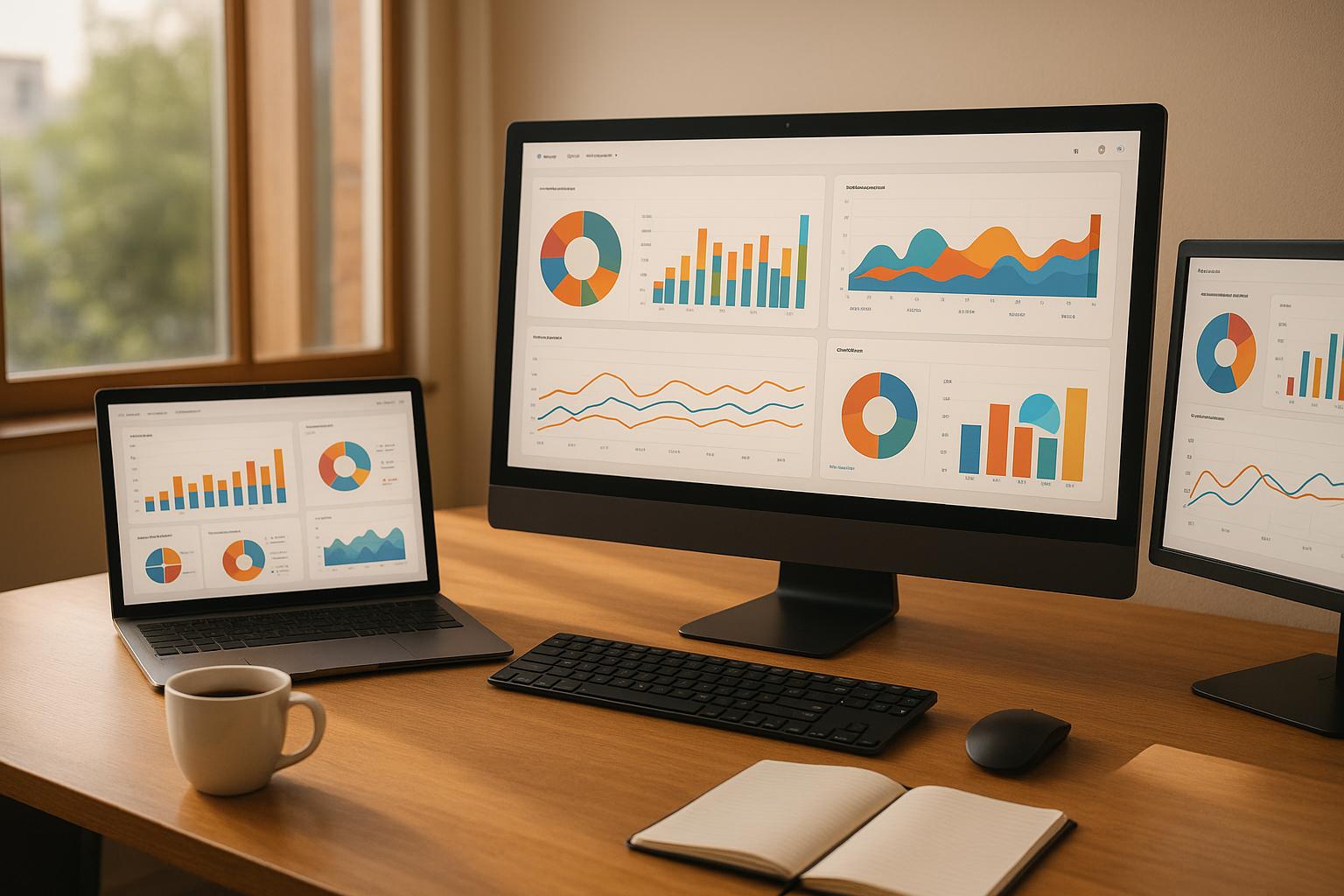Want better PPC results? Start with smarter A/B testing timelines. Here's what you need to know:
- Run tests long enough for reliable data. Too short misses patterns; too long wastes time.
- Key factors to consider: Statistical significance, conversion cycles, seasonal trends, and budget.
- Plan around external factors: Holidays and market shifts can skew results.
- Test one change at a time: Headlines, calls-to-action, or descriptions - keep it simple for clear insights.
- Use tools wisely: Platforms can automate data collection, suggest durations, and monitor statistical significance.
Quick Tip: For low traffic, tests may take weeks; high traffic can shorten timelines. Always calculate sample size based on conversion rates and goals.
A/B testing isn’t a “set it and forget it” process. It’s about balancing timing, data, and budget to improve your ad performance step by step.
How to Master Google Ads Ab Testing in 5 Minutes! (Full 2025 ...
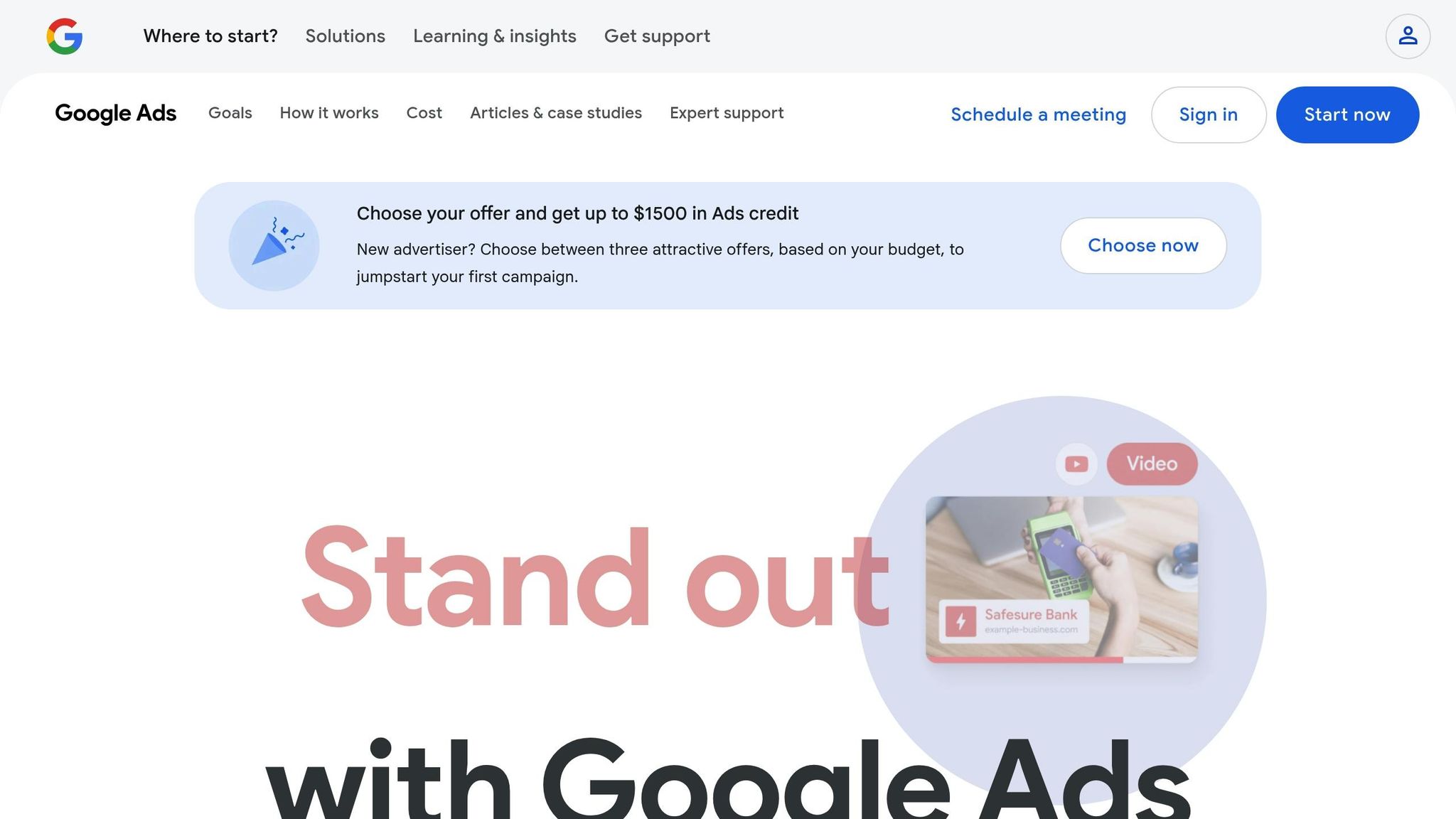
Timeline Planning Problems
External factors like seasonal events, holidays, and market trends can affect test durations and skew results. Accounting for these factors is key to getting accurate insights. Here's a closer look at how these elements influence testing and what adjustments can help.
External Factors That Affect Testing
Seasonal events and major holidays often lead to temporary changes in performance, while shifts in market trends can alter conversion patterns over time.
| Factor | Impact on Testing | Suggested Adjustment |
|---|---|---|
| Seasonal Events & Holidays | Temporary changes in performance | Plan tests to avoid major holidays or adjust timelines to reflect seasonal variations |
| Market Trends | Changes in consumer behavior can affect results | Extend test periods to capture data as trends settle |
What Determines Test Length
The length of a test depends on several factors that ensure the results are reliable and useful. Here are the main aspects to keep in mind when setting your test timelines.
Website Traffic and Conversions
The amount of traffic your website gets and its conversion rates play a major role in test duration. More traffic means faster data collection, while lower traffic levels may stretch out the time needed to gather enough information.
Budget and Data Needs
Your PPC budget affects how quickly you can gather data. Here’s how it works:
- A higher daily spend speeds up data collection.
- Lower cost-per-click (CPC) allows for more clicks within the same budget.
- You need enough data to achieve statistical confidence.
- Smaller expected changes often require larger sample sizes to detect.
Testing One Change at a Time
Focusing on one variable per test helps you clearly identify what’s driving the results. This approach ensures the insights you gather are specific and actionable. For example:
| Test Element | Example Change | Why Test It Alone |
|---|---|---|
| Headline | Current Version vs. New Version | To see how it impacts click-through rates |
| Call-to-Action | "Buy Now" vs. "Get Started" | To measure conversion rate differences |
| Description | Feature-focused vs. Benefit-focused | To understand user engagement shifts |
sbb-itb-89b8f36
How to Set Test Timelines
Using Sample Size Calculators
To figure out how long your test should run, you’ll need to calculate based on a few key metrics:
- Current conversion rate
- Minimum detectable improvement
- 95% confidence level
- 80% statistical power
For example, if your current conversion rate is 2% and you’re aiming for a 20% improvement with a 95% confidence level, you might need around 25,000 visitors per variant. With 1,000 daily visitors split evenly, this would translate to a 50-day test.
Single vs. Multiple Tests
Running one test at a time or multiple tests simultaneously depends on your traffic levels and goals. Here's a breakdown:
| Testing Approach | Best For | Timeline Considerations |
|---|---|---|
| Single Test | Small to medium accounts | 2–4 weeks per test |
| Multiple Tests | Large accounts | 3–6 weeks total |
| Sequential Tests | Accounts with limited traffic | 4–8 weeks cumulative |
When running multiple tests, make sure to separate audience segments to keep results independent. This ensures cleaner data and more reliable outcomes.
Accounting for Seasonal Trends
Seasonal fluctuations can heavily influence your test results, so it’s important to plan accordingly:
- Pre-season: Start tests 6–8 weeks before high-traffic periods.
- Baseline periods: Run tests during normal business conditions. Avoid holidays, industry events, or unusual circumstances like extreme weather.
- Year-over-year comparisons: Use historical data to identify patterns and adjust your timeline.
Tools for Better Testing
Top PPC Marketing Directory Features
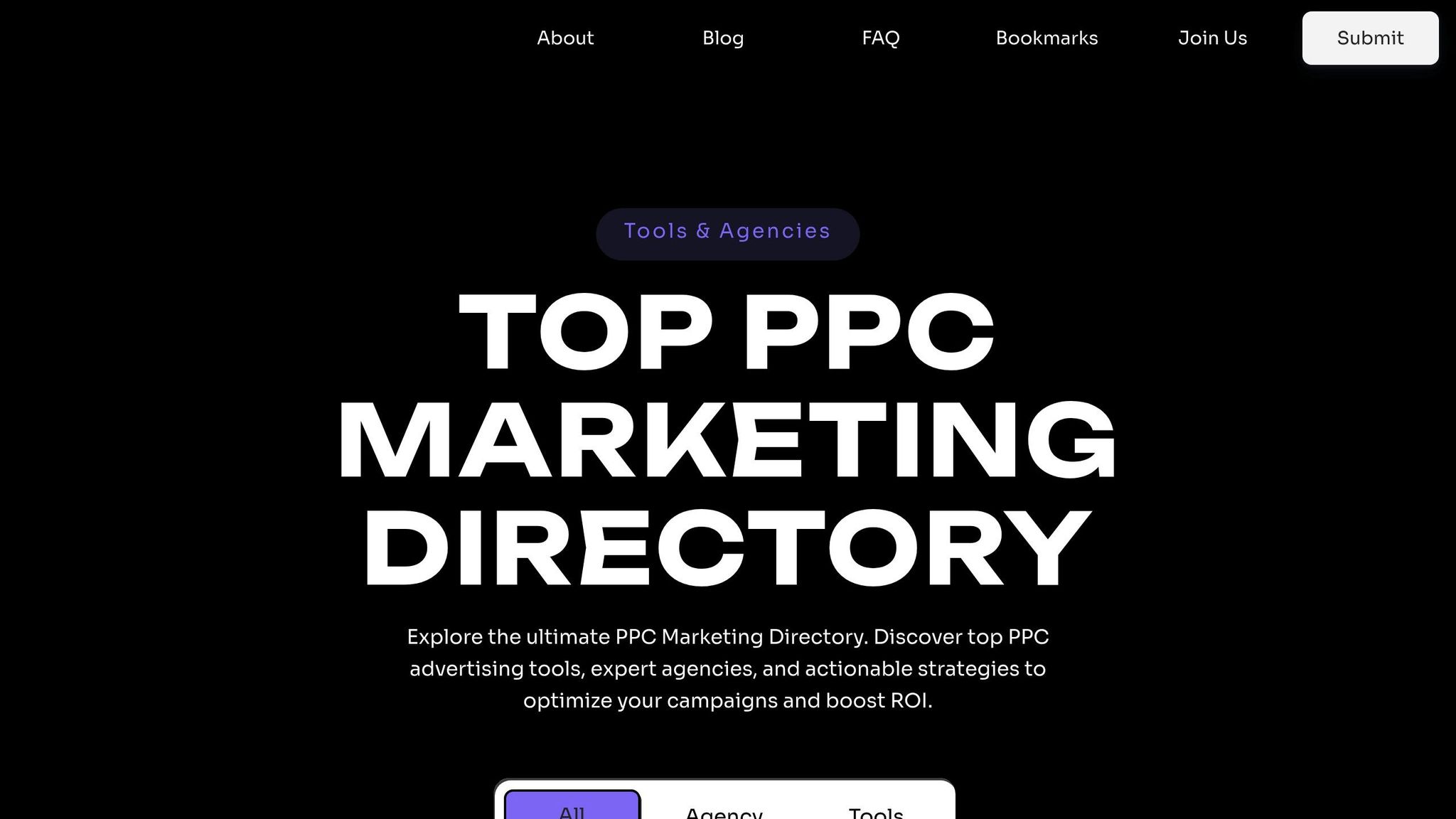
Choosing the right A/B testing tools can simplify your PPC campaigns. The directory allows you to filter tools and agencies based on your specific testing needs:
| Testing Needs | Resources Available |
|---|---|
| Ad Copy Optimization | Multivariate testing tools and performance tracking solutions |
| Conversion Analysis | Platforms focused on CRO and landing page testing |
| Industry Expertise | Agencies with experience in specific verticals |
| Budget Range | Options for businesses of all sizes, from startups to large enterprises |
Each tool's profile highlights its capabilities in managing timelines, gathering data, and analyzing results. These features align directly with your testing goals and integrate well with broader PPC platform functionalities.
Using PPC Resource Platforms
In addition to directory tools, integrated PPC platforms can further enhance your testing process. These platforms provide robust testing options to ensure consistent timelines and reliable results. Here are some key features to look for:
- Automated Data Collection: By automatically aggregating data across campaigns, these tools eliminate manual tracking errors and ensure your tests stay on track, even when running multiple variants.
- Statistical Significance Alerts: Platforms monitor your tests in real time and notify you when results reach statistical significance, saving you time and guesswork.
- Cross-Channel Integration: Integrate data from multiple advertising platforms to get a complete view of how different timeline variations impact performance across channels.
- Custom Testing Templates: Pre-built templates tailored to specific industries and campaign types make it easier to set up tests. These templates often include recommended timeline parameters based on common conversion rates and traffic patterns.
When selecting a platform, choose one that aligns with your campaign's scale and complexity to improve both efficiency and accuracy in your testing efforts.
Summary
Creating effective A/B testing timelines for PPC ads requires thoughtful planning and a consistent approach. When done right, this process helps marketers run campaigns that deliver clear, measurable outcomes.
Here are the key factors that influence effective test timelines:
- Data collection: Enough data is needed to achieve reliable results.
- Seasonal trends: Timing can affect test outcomes and validity.
- Single variable focus: Testing one variable at a time provides clearer insights.
- Budget considerations: The size of your budget impacts how long tests can run.
The Top PPC Marketing Directory connects advertisers with tools and agencies designed to simplify the testing process. Through this platform, marketers can find solutions for automating data collection, performing statistical analysis, and tracking performance across multiple channels. These resources are tailored to different industries, helping teams pinpoint the best testing methods and timing for their specific needs.
To get the most out of your A/B testing, follow these best practices:
- Use automation tools to ensure consistent and reliable data collection.
- Keep an eye on statistical significance throughout the test.
- Choose testing platforms that align with the complexity of your campaign.
Combining powerful testing tools with expert advice from industry professionals can make a big difference. This mix ensures accurate planning, effective data collection, and insights that drive better campaign performance.
A/B testing is not a one-and-done process - it requires ongoing adjustments. By leveraging directory resources and sticking to consistent testing practices, marketers can continuously improve their PPC campaigns and achieve stronger results.
FAQs
How long should I run an A/B test for a low-traffic PPC campaign?
Determining the right duration for an A/B test in a low-traffic PPC campaign can be tricky, but it's crucial for obtaining meaningful results. Instead of setting a fixed time, focus on reaching a statistically significant number of impressions or conversions. This ensures your data is reliable and actionable.
For low-traffic campaigns, you may need to run the test for several weeks or even months to gather enough data. To speed up the process, consider broadening your audience or increasing your ad spend temporarily while maintaining the test's integrity. Always ensure you're testing only one variable at a time, like ad copy or headline, to isolate what drives performance changes.
How can I adjust A/B testing timelines for PPC ads during holidays or seasonal changes?
To effectively adjust A/B testing timelines during holidays or seasonal fluctuations, consider the following:
- Shorter testing periods: Holidays and peak seasons often have compressed timelines. Aim for shorter testing windows to capture meaningful data quickly.
- Increased traffic patterns: Seasonal spikes in traffic can provide faster insights. Use this opportunity to gather statistically significant results sooner.
- Audience behavior shifts: Keep in mind that user behavior may differ during these periods. Test ad variations that align with seasonal trends or holiday-specific messaging.
By tailoring your A/B testing strategy to these factors, you can ensure your campaigns remain relevant and impactful during high-demand times.
Why is it crucial to test only one change at a time in PPC ad campaigns, and how does it affect the results?
Testing only one change at a time in PPC ad campaigns is essential because it ensures that you can clearly identify which specific change is driving the results. Whether you're experimenting with a new headline, call-to-action, or image, isolating a single variable eliminates ambiguity and provides actionable insights.
When multiple changes are tested simultaneously, it becomes difficult to pinpoint what caused a performance improvement or decline. This can lead to inaccurate conclusions and wasted ad spend. By focusing on one change per test, you can make data-driven decisions to continuously optimize your campaigns for better results.
